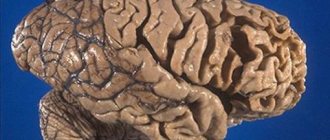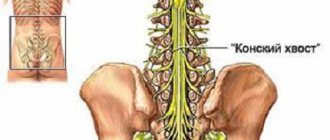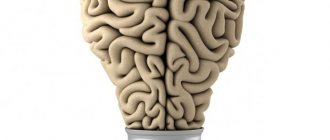I remember this famous expression that “nerve cells do not recover” from my student days. However, life and eternal stress were familiar to me from early childhood. There were worries and emotional turmoil all the time. And even now, my colleague always says: “Will there ever be a time of peace in your “kingdom?” It’s probably better not to wait for him! In the meantime, nerve cells die from restlessness and eternal stress, but you can build new neural connections in the brain... this is what the article is about!
"Wiring"
Neural connections of the brain are the wiring of the nervous system. The functioning of the nervous system is based on the ability of a neuron to perceive, process and transmit information to other cells.
Information is transmitted through a nerve impulse. Human behavior and the functioning of his body completely depend on the transmission and reception of impulses by neurons through processes.
A neuron has two types of processes: axon and dendrite. A neuron always has one axon; it is through it that the neuron transmits impulses to other cells. It receives an impulse through dendrites, of which there may be several.
Many (sometimes tens of thousands) axons of other neurons are “connected” to the dendrites. The dendrite and axon contact through a synapse.
Nerve cells are restored (!)
Until the middle of the 20th century, it was believed that the adult brain was a stable system, where all functions were strictly distributed among departments, and the neurons themselves could only die.
Everyone has heard and said the phrase “nerve cells do not recover” many times.
Indeed, in the late 1990s, some scientists concluded that stress kills brain cells. But back in the 1960s, research showed that our brains are capable of recovering from traumatic events.
Moreover, in many cases, if part of the brain is damaged, another part can take over the functions of that part over time.
This is how a direction emerged that studies the neuroplasticity of the brain (changing and creating connections between neurons).
It is neuroplasticity that is responsible for the brain’s ability to adapt and change our lives for the better.
Scientists have now come to the conclusion that neuroplasticity is an “umbrella concept” that includes many processes in the brain that we can influence with simple actions.
We'll share efforts to help prime your brain for efficiency and recovery from stress.
Neuron and synapses
The gap between the dendrite and the axon is a synapse. Because the axon is the “source” of the impulse, the dendrite is the “receiver”, and the synaptic cleft is the site of interaction: the neuron from which the axon comes is called presynaptic; the neuron from which the dendrite comes is postsynaptic.
Synapses can form between an axon and a neuron body, and between two axons or two dendrites. Many synaptic connections are formed by the dendritic spine and the axon. The spines are very plastic, have many shapes, and can quickly disappear and form. They are sensitive to chemical and physical influences (injuries, infectious diseases).
At synapses, information is most often transmitted through mediators (chemicals). Transmitter molecules are released on the presynaptic cell, cross the synaptic cleft and bind to membrane receptors of the postsynaptic cell. Mediators can transmit an excitatory or inhibitory (inhibitory) signal.
Neural connections in the brain are the connection of neurons through synaptic connections. Synapses are the functional and structural units of the nervous system. The number of synaptic connections is a key indicator for brain function.
Formation of neural connections in children
Formation of neural connections in children
The human nervous system can rightfully be called one of the most complex devices, most of the mechanisms of which still remain a mystery to scientists. If we examine the smallest particles of this system - neurons - under a microscope, we will see such intricate interweavings that we cannot even say exactly where one ends and the second begins. And these interweavings become more and more complex in the process of brain development.
Nerve cells begin to form at an extraordinary speed (about a quarter of a million per minute!) already in the mother’s womb. By 11–12 weeks of intrauterine development, the gyrus and sulci of the brain begin to form. By the time of birth, they look just like a diagram of the future pattern of furrows. The general picture of the grooves and convolutions will develop and be quite stable only a year after the birth of the child. So, at the time of his birth, the child has almost all the neurons provided for him by nature. And yet, his nervous system is still very far from perfect: the network of nerve fibers begins its rapid and uneven development only after birth.
Why don't we remember the first years of life? Why is much knowledge easier for a child than for an adult?
A well-known fact: as a rule, our very first memories date back to the age of three or more years. This is explained by a lack of neural connections in early childhood. And although earlier experiences are “forgotten,” it cannot be said that they pass without a trace. After all, they help prepare the brain for acquiring new knowledge.
When many neural connections are formed as a result of brain maturation, only actively used connections retain experience. By the time of puberty, there is a massive disappearance of unused connections. It is here, at the intersection of inclinations and upbringing, that neural connections are activated and preserved in the child’s environment. However, if this environment is monotonous and impoverished, the neural connections will not be used and will disappear. This is the biological basis of early childhood education. That is why in early childhood, when unnecessary neural connections are still in demand, children can most easily master the grammar and pronunciation of a foreign language. If a person did not have any language contacts (written or signed) before adolescence, then he will never learn a single word.
Child brain development in the first years of life
For optimal brain development, the early years are a critical (sensitive) period. Throughout life, our nervous tissues change. The genetic program dictates the general structure of our brain, and life experience guides the details.
Receptors
Receptors are remembered every time they talk about drug or alcohol addiction. Why does a person need to be guided by the principle of moderation?
A receptor on the postsynaptic membrane is a protein tuned to transmitter molecules. When a person artificially (with drugs, for example) stimulates the release of transmitters into the synaptic cleft, the synapse tries to restore balance: it reduces the number of receptors or their sensitivity. Because of this, the natural levels of concentration of transmitters in the synapse cease to have an effect on neural structures.
For example, people who smoke nicotine change the sensitivity of receptors to acetylcholine, desensitization (decreased sensitivity) of the receptors occurs. The natural level of acetylcholine is insufficient for receptors with reduced sensitivity. Because Acetylcholine is involved in many processes, including those associated with concentration and a sense of comfort; a smoker cannot obtain the beneficial effects of the nervous system without nicotine.
However, receptor sensitivity is gradually restored. Although this may take a long time, the synapse returns to normal and the person no longer requires outside stimulants.
“By changing neural connections, we can control our emotions”
For depression, we used mindfulness practice: we taught patients to consciously direct attention to their negative thoughts about themselves and about the world around them. But at the same time you need to observe them from the outside, simply as thoughts that come and go; not to identify with them, but, on the contrary, to distance themselves. This technique significantly reduces symptoms of depression. But it only works with daily practice, because you need to accustom and train your brain to react differently.
You say “direct attention”, you use the practice of mindfulness in your work. Attention - what is this from a scientific point of view?
Mindfulness is the extent to which we are able to focus our attention and remain in that state without getting distracted or allowing our mind to wander.
Then explain how you define mindfulness meditation.
One of the analogues of the word “meditation” in Sanskrit is “acquaintance”. We can say that in the East a whole family of mental practices was developed, which were called meditation. And in essence, it is a set of different strategies for familiarizing a person with his own mind. Mindfulness meditation refers to a type of meditation in which practitioners learn to intentionally and without judgment direct their attention to an object, emotion, or thought. And because they learn not to judge themselves, their actions and mental processes, and other people, they learn to react differently emotionally in stressful situations.
I am confident that meditation practices have enormous potential not only for transforming the consciousness of individuals, but also, as a consequence, for the world in which we live. I think few would dispute the fact that if people on the planet become more compassionate and kind to each other, learn to better manage their emotions and their lives, and focus their attention on what really matters, we will live in a completely different world.
Perhaps it is better to start teaching children mindfulness as early as possible, at the age of 3-4 years?
I'm glad you asked this because the answer to this question interests me too. In the United States, we are conducting a large-scale study involving preschoolers aged 4–5 years. For them, we have developed a “Kindness Program” that lasts 12 weeks. For example, we ask children to lie on the floor and place small stones on their stomachs. Then we ask them to watch for five minutes as the pebble moves down and up with their belly in time with their breathing. When this short practice is done several times throughout the day, each child will achieve a total of 90 minutes of meditation over the course of a week.
Development of neural networks
Long-term changes in neural connections occur in various diseases (mental and neurological - schizophrenia, autism, epilepsy, Huntington's, Alzheimer's and Parkinson's diseases). Synaptic connections and internal properties of neurons change, which leads to disruption of the nervous system.
The activity of neurons is responsible for the development of synaptic connections. “Use it or lose it” is the principle underlying the neural networks of the brain. The more often neurons “act”, the more connections there are between them; the less frequently, the fewer connections. When a neuron loses all its connections, it dies.
Some authors also express other ideas that are responsible for regulating the development of neural networks. M. Butz associates the formation of new synapses with the brain’s tendency to maintain a “habitual” level of activity.
When the average level of neuronal activity drops (for example, due to injury), neurons build new contacts, and neuronal activity increases with the number of synapses. The opposite is also true: as soon as the level of activity becomes greater than the usual level, the number of synaptic connections decreases. Similar forms of homeostasis are often found in nature, for example, in the regulation of body temperature and blood sugar levels.
M. Butz M. Butz noted:
...the formation of new synapses is due to the desire of neurons to maintain a given level of electrical activity...
Henry Markram, who is involved in a neural brain simulation project, highlights the industry's prospects for studying the disruption, repair and development of neural connections. A team of researchers has already digitized 31 thousand rat neurons. The neural connections of a rat's brain are shown in the video below.
How long are neural networks before the human brain?
In some aspects, the neural network is already superior to the human brain - this is information storage and speed, its processing. Once the neural network has memorized the data, it will be stored in its memory forever.
As for the quality of information processing, the neural network does not yet reach the levels of the human brain. Every year, this indicator improves, but reaching or surpassing a person is a question for decades of productive work. The imperfection of the neural network also plays an important role. There are quite a lot of types of networks and each is responsible for one or another aspect of the activity. The natural neural network is one and it interacts as a single mechanism, which in practice is very, very difficult to achieve artificially.
Neuroplasticity
The development of neural connections in the brain is associated with the creation of new synapses and modification of existing ones. The possibility of modifications is due to synaptic plasticity - a change in the “power” of the synapse in response to the activation of receptors on the postsynaptic cell.
A person can remember information and learn thanks to the plasticity of the brain. Due to neuroplasticity, disruption of neural connections in the brain due to traumatic brain injury and neurodegenerative diseases does not become fatal.
Neuroplasticity is driven by the need to change in response to new living conditions, but it can both solve a person's problems and create them. A change in synapse power, for example, when smoking, is also a reflection of the plasticity of the brain. Drugs and obsessive-compulsive disorder are so difficult to get rid of precisely because of non-adaptive changes in synapses in neural networks.
Neuroplasticity is greatly influenced by neurotrophic factors. N.V. Gulyaeva emphasizes that various disorders of neural connections occur against the background of a decrease in the levels of neurotrophins. Normalizing the level of neurotrophins leads to the restoration of neural connections in the brain.
All effective drugs used to treat brain diseases, regardless of their structure, if they are effective, they normalize local levels of neurotrophic factors by one mechanism or another.
Optimization of neurotrophin levels cannot yet be achieved by direct delivery to the brain. But a person can indirectly influence the levels of neurotrophins through physical and cognitive stress.
era
When the neural network is initialized, this value is set to 0 and has a manually set ceiling. The larger the epoch, the better trained the network and, accordingly, its result. The epoch increases each time we go through the entire set of training sets, in our case, 4 sets or 4 iterations.
It is important
not to confuse iteration with epoch and understand the sequence of their increment. First, the iteration increases n times, and then the epoch, and not vice versa. In other words, you cannot first train a neural network on only one set, then on another, and so on. You need to train each set once per era. This way, you can avoid errors in calculations.
Physical exercise
Reviews of research show that exercise improves mood and cognition. Evidence suggests that these effects are due to changes in BDNF levels and improved cardiovascular health.
High levels of BDNF were associated with better performance in spatial abilities, episodic and verbal memory. Low levels of BDNF, especially in older adults, have been correlated with hippocampal atrophy and memory impairment, which may be associated with cognitive problems that occur in Alzheimer's disease.
When studying possibilities for treating and preventing Alzheimer's, researchers often talk about the indispensability of physical exercise for people. Thus, studies show that regular walking affects the size of the hippocampus and improves memory.
Physical activity increases the rate of neurogenesis. The appearance of new neurons is an important condition for relearning (acquiring new experiences and erasing old ones).
What not to waste time on
Vitamins and supplements without examination or doctor's prescription
It is believed that increased intake of magnesium and choline may improve neuroplasticity. In theory this is true, but it only applies to people whose levels of these elements are dangerously low.
Don't prescribe vitamins and supplements without testing, simple dietary changes, and talking to your doctor.
Classical music
There are many studies that show that classical music influences the way we learn and think.
At the same time, scientists say that the best effect on the brain is provided by our favorite music, which keeps us in a state of “flow.” If it's not Bach or Mozart, don't torture yourself.
Cognitive load
Neural connections in the brain develop when a person is exposed to a stimulus-enriched environment. New experiences are the key to increasing neural connections.
A new experience is a conflict when the problem is not solved by the means that the brain already has. Therefore, he has to create new connections, new patterns of behavior, which is associated with an increase in the density of spines, the number of dendrites and synapses.
Learning new skills leads to the formation of new spines and destabilization of old spine-axon connections. A person develops new habits, and old ones disappear. Some studies have linked cognitive disorders (ADHD, autism, mental retardation) with spinal abnormalities.
The spines are very plastic. The number, shape, and size of spines are associated with motivation, learning, and memory.
The time required to change their shape and size is measured literally in hours. But this also means that new connections can disappear just as quickly. Therefore, it is best to give preference to short but frequent cognitive loads over long and rare ones.
The concept of "growth mindset"
Only by recognizing this concept does it make sense to read on and choose neuroplasticity exercises that suit your tastes.
The concept of growth mindset accepts that innate skills and abilities can be developed and improved.
A person with a growth mindset believes that they can become smarter, better, and more experienced through constant effort, which is what neuroplasticity involves.
All business content in a convenient format. Interviews, cases, life hacks of the corporation. world - in our telegram channel. Join us!
Before moving on to the practical development of neural connections, it is important to recognize that you can “charge” your brain and learn new skills at any age.
First of all, get rid of harmful beliefs:
- what I do needs constant approval
- if I start and quit, I won't be taken seriously
- after 20-30-45 it’s too late to start anything
- Children are like sponges, and it will take me forever to develop the most minimal
- all this will take too much time, and I don’t even have a minute
- nothing can be changed.
And apply useful ones:
- It doesn’t matter how old I am, what matters is what I pay attention to
- I do this for myself
- I’m lucky that scientists have learned and talked about brain development, I need to take advantage of this;
- I'll try and see
- there's nothing stopping me from trying.
Lifestyle
The diet can improve cognitive performance and protect the brain's neural connections from damage, promote recovery from illness, and counteract the effects of aging. Brain health appears to have a positive effect on:
- omega-3 (fish, flax seeds, kiwi, nuts);
- curcumin (curry);
— flavonoids (cocoa, green tea, citrus fruits, dark chocolate);
— B vitamins;
— vitamin E (avocado, nuts, peanuts, spinach, wheat flour);
- choline (chicken meat, veal, egg yolks).
Most of the listed products indirectly affect neurotrophins. The positive effects of diet are enhanced by physical exercise. In addition, moderate calorie restriction in the diet stimulates the expression of neurotrophins.
Eliminating saturated fats and refined sugar is helpful for restoring and developing neural connections. Foods with added sugars reduce neurotrophin levels, which negatively affects neuroplasticity. And the high content of saturated fats in food even inhibits brain recovery after traumatic brain injury.
Among the negative factors affecting neural connections: smoking and stress. Smoking and long-term stress have recently been associated with neurodegenerative changes. Although short-term stress can be a catalyst for neuroplasticity.
The functioning of neural connections also depends on sleep. Perhaps even more than from all the other factors listed. Because sleep itself is “the price we pay for brain plasticity” (Sleep is the price we pay for brain plasticity. Ch. Cirelli - Ch. Cirelli).
Scheme and concept of work
You can imagine the principle of operation of a neural network without having specific skills. The general scheme or algorithm is as follows: - certain data arrives at the input layer of neurons; — information is transmitted using synapses to the next layer, and each synapse has its own weight coefficient, and any next neuron is capable of having several incoming synapses; — the data received by the next neuron is the sum of all data for neural networks, which is multiplied by the weight coefficients (each by its own); — the resulting value is substituted into the activation function, resulting in the formation of output information; — information is transmitted further until it reaches the final output.
As we know, the first launch of the neural network will not give the correct results, because it has not yet been trained. If we talk about the concept of an activation function, then this function is used to normalize the input data. There are many of these functions, but I would like to highlight the main ones that are most widespread. The main difference is the range of values where they operate: - linear function f(x) = x. It is the simplest of all; it should only be used for testing the created neural network or transmitting data in its original form; - sigmoid is a more common activation function. The range of values is from zero to one. I also call it the logistic function; — hyperbolic tangent. The method is needed to cover negative values as well. When their use is not intended, the hyperbolic tangent is not needed.
It remains to be said that to set up a neural network of data for further processing, training sets will be required.
Summary
How to improve neural connections in the brain? The following have a positive effect:
- physical exercise;
- challenges and difficulties;
- good sleep;
- balanced diet.
Negatively affects:
- fatty foods and sugar;
- smoking;
- long-term stress.
The brain is extremely plastic, but “sculpting” something out of it is very difficult. He doesn't like to waste energy on useless things. The fastest development of new connections occurs in a situation of conflict, when a person is not able to solve a problem using known methods.
Error
Error is a percentage that reflects the difference between the expected and received responses.
The error is formed every era and must decline. If this doesn't happen, then you are doing something wrong. The error can be calculated in different ways, but we will consider only three main methods: Mean Squared Error (hereinafter MSE), Root MSE and Arctan. There is no restriction on use like there is in the activation function, and you are free to choose any method that will give you the best results. You just have to keep in mind that each method counts errors differently. With Arctan, the error will almost always be larger, since it works on the principle: the greater the difference, the greater the error. The Root MSE will have the smallest error, so it is most common to use an MSE that maintains balance in error calculation. MSE
Root MSE
Arctan
The principle of calculating errors is the same in all cases. For each set, we count the error by subtracting the result from the ideal answer. Next, we either square it or calculate the square tangent from this difference, after which we divide the resulting number by the number of sets.











